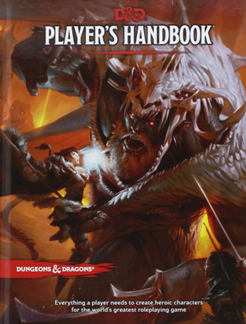 One aspect I didn’t touch on in my first article about hit points was the rate of natural healing. For those of you who began with the current edition, it didn’t work the same way. It was slower.
One aspect I didn’t touch on in my first article about hit points was the rate of natural healing. For those of you who began with the current edition, it didn’t work the same way. It was slower.
In Original Dungeons & Dragons the rate of healing was one hit point per day, except for the first day when no hit points were restored. This required complete rest – so no going adventuring during that period!
One of the effects of this was that a fighter who had taken 40 points of damage would take 41 days to recover. Being of a higher level? No help here!
The Basic Dungeons & Dragons of 1977 increased this rate: it was 1-3 points of healing per day of recuperation. On average this was twice as fast.
In Advanced Dungeons & Dragons (1978), characters regained hit points at the rate of 1 hit point per day for the first 30 days, and then at the rate of 5 hit points per day thereafter.
Or, if you checked the Dungeon Masters Guide, you regained 1 hit point per day, with the weekly total adjusted by their constitution modifier; a character with a -2 penalty would heal a maximum of 5 hit points per week, a character with a +2 bonus would regain an additional 2 hit points for each week of rest. Four weeks of continuous rest would heal a character to maximum, regardless of the number of hit points lost.
The Basic Dungeons & Dragons of 1981 kept the rate of the previous Basic game: 1-3 points of healing per day.
Advanced Dungeons & Dragons 2nd Edition (1989) had yet another system: 1 hit point per day of rest, or 3 hit points per day of complete bed rest, with an additional bonus equal to his Consitution modifier being accrued after each week of complete rest.
All of these methods kept one thing in common: it would take longer for a high-level character to fully heal than a low-level character. Was this ever explained? Not really, although the definition of hit points tended to emphasize that it wasn’t purely physical punishment – a great portion of the hit points of higher-level characters were representing the grace of the gods, luck, or sheer bloody-mindedness that would eventually give out over the course of a combat – all the near misses (represented by hit point loss) before the final, fatal blow.
I guess it represented a world where you needed a cleric to properly intervene with the gods to restore your luck. Cure light wounds could be reinterpreted as Regain Divine Favour!
For all of these editions, clerical healing was limited. It existed, certainly, and was extremely important to regain hit points between encounters and adventuring sessions. However, the use of healing magic in the middle of combat was difficult and of limited utility. Healing 1d8 hit points when the next set of blows would deal 2d8 damage? It wasn’t worthwhile, especially in Advanced Dungeons & Dragons where the slow casting time of cure light wounds in relationship to other spells meant it would normally be cast towards the end of the round – and was often spoilt by a hit on the cleric. (In those days, any attack that hit a spellcaster before the spell was cast caused the spell to be spoilt and lost).
The way hit points worked would change markedly in the next edition, due to a combination of factors that were probably not anticipated by the designers.

Our groups always found these rules horrid, but we used them. If your cleric was up, it all meant several days of cleric (or Druid, etc.) memorizing nothing but healing spells and casting them in a safe spot. If the cleric was down, or dead, or not present, the. We just had to get to town and we handwaived a month passing.
The worst part of this was wandering monsters. Most adventures (and the core rules) had the idea of any travel to town having several checks. You might die on the way back! Most DMs were kind about this, handwaiving or picking fights to be fair. But on the way back from town, after healing, it was fair game. Many times we were badly hurt, went to town, began to travel to the dungeon, were badly hurt by some unbalanced wandering encounter, and had to head right back to town. All of this led to 3E/4E changes (and ushered in “adventuring day” concerns as resting became a faster recharge.
It’s interesting that Gygax calls out the inappropriate use of wandering monsters on the first page of the AD&D DMG…
He does, but still puts them in many adventures with very little balance. For new players and DMs (we were 12 when I started), it was rough. It’s still rough for new DMs, regardless of age.
Very rough. There’s a lot of Gygax expecting the DMs to know all about how to run the game – or being older than we were when we started!
The AD&D healing rule you cite is the one from the Players Handbook (“Healing”, p. 105). The Dungeon Masters Guide’s “Recovery of Hit Points” section (p. 82) instead says that characters heal 1 hit point per day, with the weekly total reduced by any CON penalty (or boosted by any CON bonus after the first full week), and are automatically healed to full after 4 full weeks of continuous rest. Ahhh, consistency!
Thanks – I forgot to double check there!
Always entertaining and interesting. Thanks a lot, Merric !
Not a problem! Glad you enjoyed it. Now to write part 3…